10 Best Punching Power Training Exercises

Powerful punches are tricky for beginners. You first need to master the basics: get your technique right, build core strength, and nail the hip rotation. Balancing their weight and engaging their core muscles effectively is a major challenge during punching action. It might seem challenging at first, but with consistent practice, you’ll soon find yourself throwing faster and more impactful punches. Here are our top best punching power training exercises to engage your core and improve your balance and movements.
Punching Power Training Exercises
Building punching power requires a combination of strength, speed, and technique. Here are some effective punching power training exercises, each with clear steps, techniques, target regions, and any necessary gym equipment/accessories:
Medicine Ball Slams:
Steps:
- Stand with feet shoulder-width apart, holding a medicine ball overhead.
- Explosively slam the ball to the ground, using your entire body.
- Catch the ball on the bounce and repeat for the recommended repetitions.
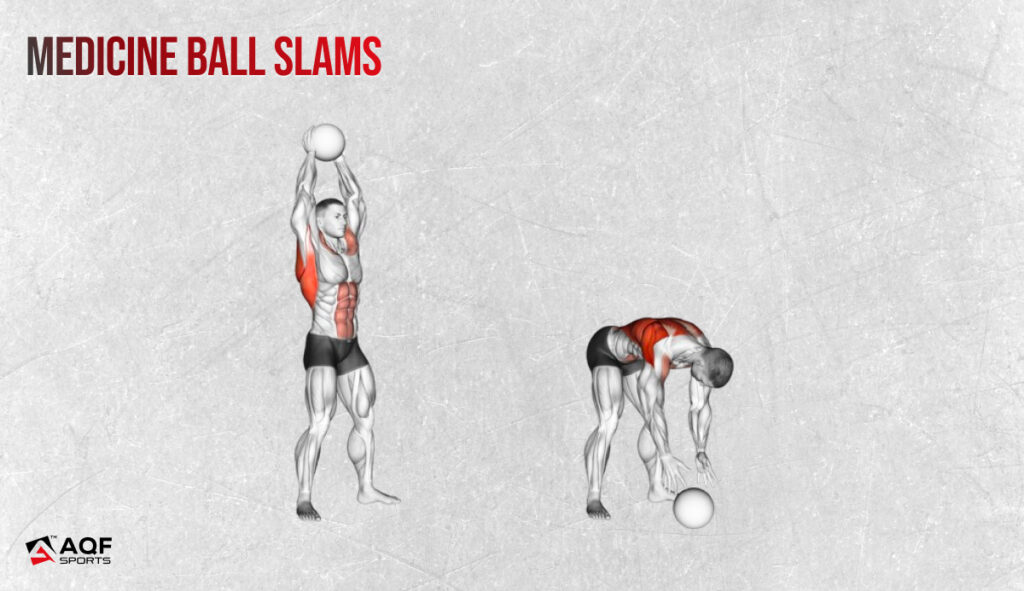
Technique: Engage your core and rotate your hips and shoulders for maximum power.
Target Regions: Core, shoulders, and overall explosiveness.
Equipment/Accessories: Medicine ball.
Plyometric Push-Ups:
Steps:
- Begin in a standard push-up position.
- Lower your body and explosively push off the ground, lifting your hands.
- Land softly and immediately go into the next repetition.
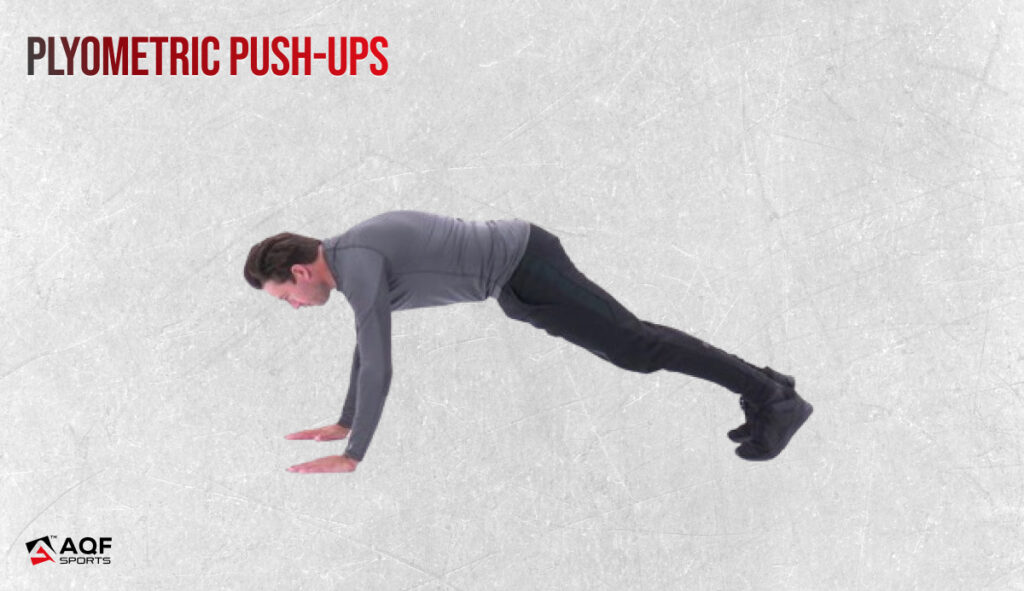
Technique: Focus on explosive upward movement and a controlled landing.
Target Regions: Chest, triceps, and fast-twitch muscles.
Equipment/Accessories: None (can use push-up bars for wrist comfort).
Box Jumps:
Steps:
- Stand in front of a sturdy box or platform.
- Jump onto the box with both feet, landing softly.
- Step back down and repeat for the desired number of reps.
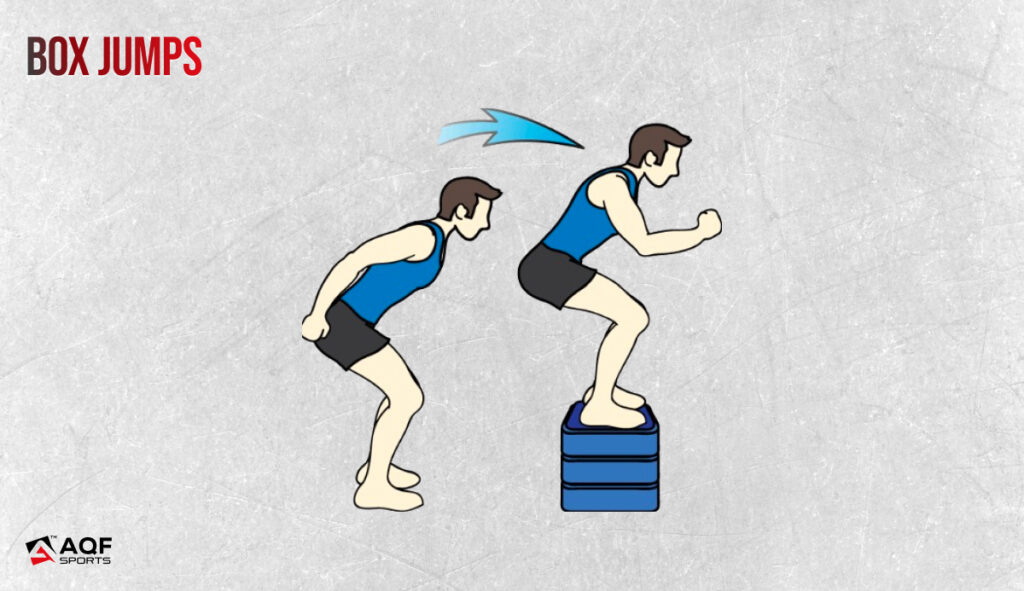
Technique: Explode upward with a strong hip extension.
Target Regions: Legs, hips, and explosive power.
Equipment/Accessories: Plyo box or sturdy platform.
Resistance Band Rotations:
Steps:
- Attach a resistance band to a fixed point at chest height.
- Hold the band with both hands and rotate away from the anchor point.
- Return to the starting position and repeat on the other side.
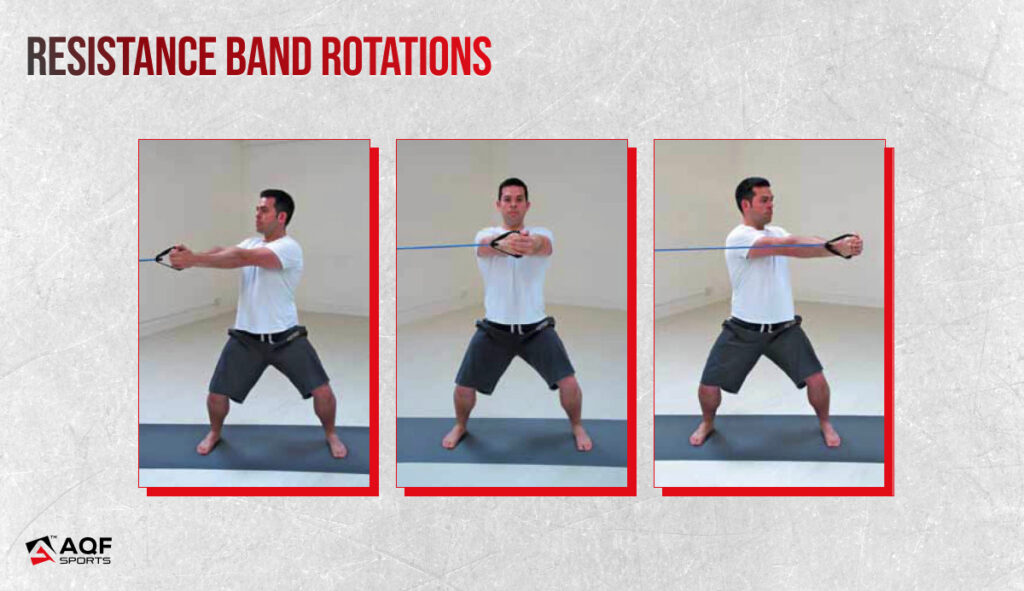
Technique: Emphasize rotational power, engaging the core.
Target Regions: Core, obliques, and rotational strength.
Equipment/Accessories: Resistance band.
Heavy Bag Work:
Steps:
- Put on hand wraps and gloves.
- Incorporate various punches (jab, cross, hook) on the heavy bag.
- Focus on technique, speed, and power in each punch.
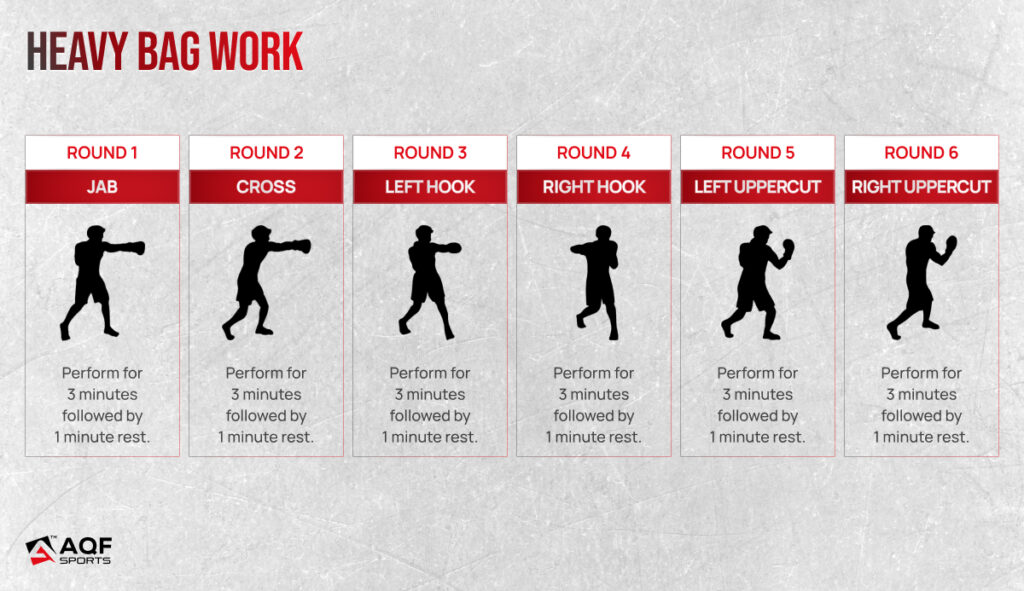
Technique: Pivot your hips and rotate your shoulders with each punch.
Target Regions: Arms, shoulders, core, and overall punching mechanics.
Equipment/Accessories: Heavy bag, hand wraps, gloves.
Punching Power Training Pro Drills
Here are some professional punching power training drills with clear steps, techniques, target regions, and necessary gym equipment/accessories:
Shadow Boxing with Resistance Band:
Steps:
- Stand in a boxing stance with light dumbbells or resistance bands in hand.
- Execute various punches (jab, cross, hook) with resistance, focusing on form.
- Shadow box for 2-3 minute rounds, maintaining speed and power.
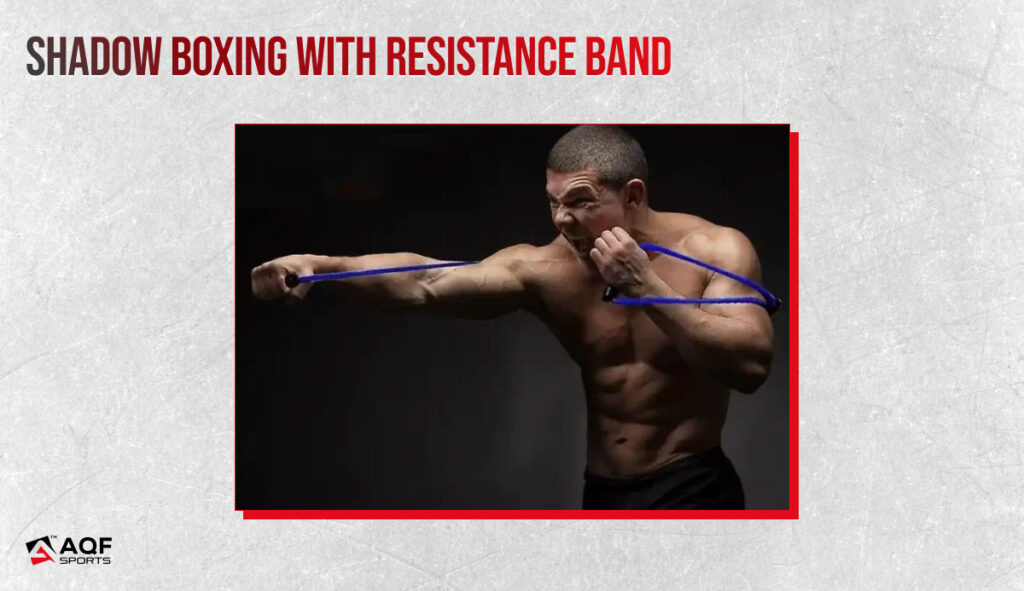
Technique: Emphasize quick, explosive movements against resistance.
Target Regions: Shoulders, arms, core, and overall punching technique.
Equipment/Accessories: Light dumbbells or resistance bands.
Suggested Read: 13 Mini Resistance Bands Exercises for Beginners
Speed Bag Training:
Steps:
- Mount a speed bag at head height.
- Use quick, rhythmic punches to keep the speed bag moving.
- Focus on maintaining a consistent pace and hand-eye coordination.
Technique: Utilize quick, precise punches with proper hand positioning.
Target Regions: Shoulders, arms, wrists, and hand-eye coordination.
Equipment/Accessories: Speed bag and boxing gloves.
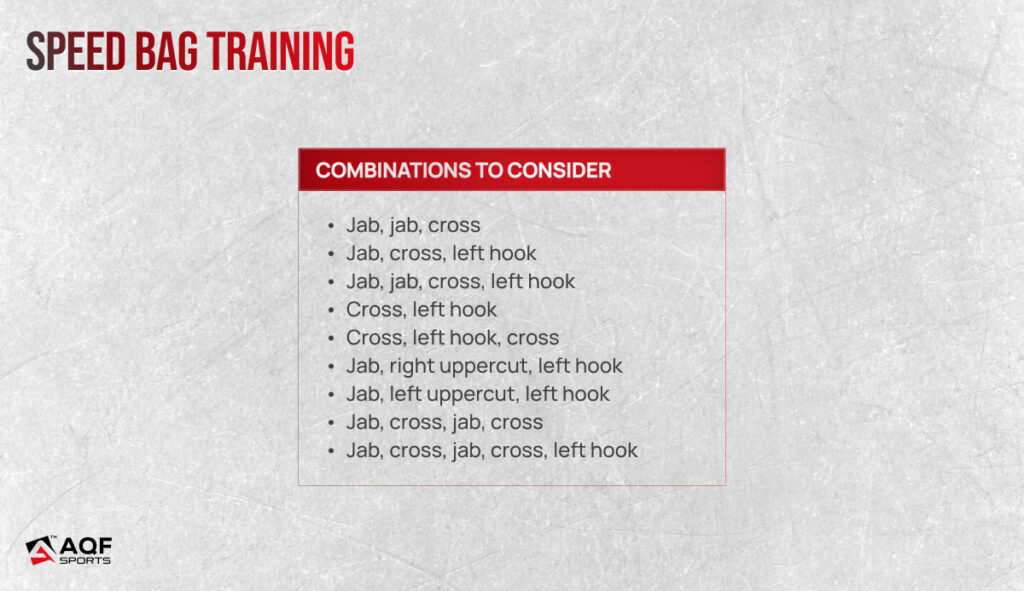
Explosive Medicine Ball Throws:
Steps:
- Stand facing a wall with a medicine ball in hand.
- Execute explosive chest passes, throwing the ball against the wall.
- Catch and repeat for 2-3 sets, emphasizing power in each throw.
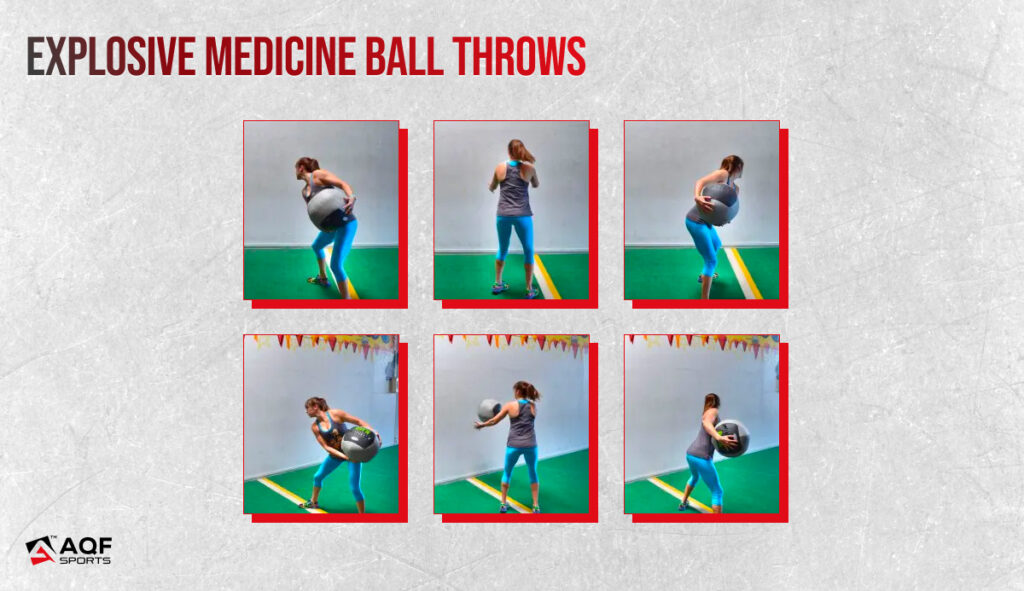
Technique: Engage the entire body, using hips and core for power.
Target Regions: Chest, shoulders, core, and explosive power.
Equipment/Accessories: Medicine ball and a sturdy wall.
Focus Mitt Drills with a Trainer:
Steps:
- Partner with a trainer holding focus mitts.
- Execute various combinations with speed and power.
- Focus on accuracy, technique, and quick recovery.
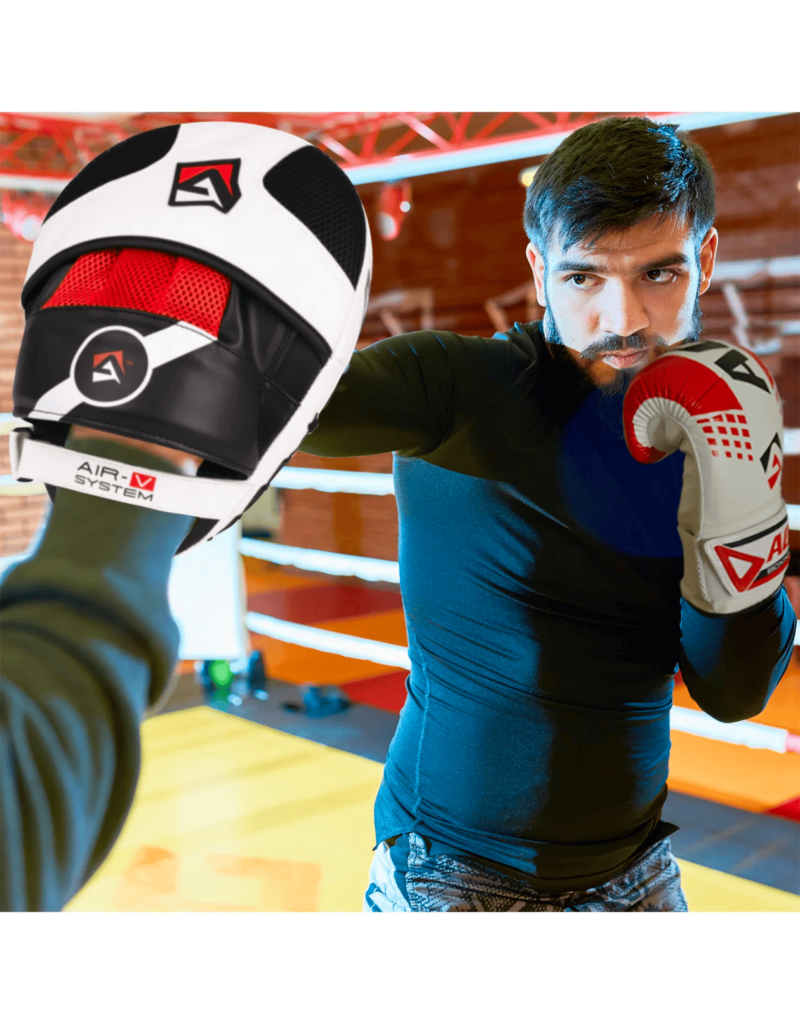
Technique: Coordinate punches with footwork and precise striking.
Target Regions: Arms, shoulders, core, and overall boxing skills.
Equipment/Accessories: Focus mitts and a training partner.
Always warm up before starting these drills, and pay attention to proper form to avoid injuries. These exercises can be integrated into a comprehensive boxing training regimen to enhance overall punching power and performance.
Everyday Punching Power Training Drill Combos
| Round | Drills | Duration | Purpose |
| Dynamic Warm-Up Round | Jumping jacks | 1 minute | Elevates heart rate, activates muscles, and prepares the body for intense training. |
| High knees | 1 minute | ||
| Shadow boxing with light dumbbells | 2 minutes | ||
| Speed and Precision Round | Speed bag | 2 minutes | Improves hand speed, hand-eye coordination, and precision in striking. |
| Focus mitt drills with a trainer | 3 minutes | ||
| Explosive Power Round | Medicine ball slams | 2 minutes | Develops explosive power in the upper body and core. |
| Explosive chest passes against a wall | 2 minutes | ||
| Combination Mastery Round | Shadow boxing with a focus on varied combinations | 3 minutes | Enhances technique, footwork, and the ability to flow seamlessly between different punches. |
| Heavy bag power rounds | 3 minutes | ||
| Endurance and Core Strength | Plyometric push-ups | 1 minute | Builds upper body strength, endurance, and core rotational power. |
| Resistance band rotations | 2 minutes | ||
| Agility and Footwork Round | Cone drills for lateral movement | 2 minutes | Improves agility, balance, and defensive maneuvers. |
| Defensive shadow boxing | 2 minutes | ||
| Cool Down and Flexibility Round | Light jogging in place | 1 minute | Lowers heart rate, prevents muscle tightness, and enhances flexibility. |
| Static stretching for the upper and lower body | 5 minutes |
Tips for Effective Punching Power Training:
- Maintain proper form throughout each drill.
- Focus on quality over quantity for maximal results.
- Gradually increase intensity as fitness levels improve.
- Listen to your body and incorporate rest days to avoid overtraining.
Proper Technique and Form for Maximum Punching Power
Stance:
Feet: Stand with your feet shoulder-width apart, one foot slightly in front of the other.
Knees: Keep your knees slightly bent for flexibility and quick movements.
Weight Distribution: Distribute your weight evenly between both legs, favouring the back leg for power.
Body Alignment:
Torso: Rotate your torso during punches to generate power from your core.
Hips: Engage your hips by turning them into the direction of the punch.
Shoulders: Keep your shoulders relaxed but ready to rotate with each punch.
Hand Position:
Guard: Maintain a proper guard with one hand protecting your face and the other near your midsection.
Knuckles: Align your knuckles with your forearm to avoid wrist injuries.
Elbows: Keep your elbows close to your body for protection and power generation.
Punching Techniques:
Jab: Extend your lead hand quickly, keeping it straight, and bring it back to your guard position swiftly.
Cross: Rotate your rear shoulder and hip while extending your rear hand straight, pivoting on your back foot.
Hook: Pivot on the lead foot while rotating your lead hip and shoulder, keeping the elbow bent at a 90-degree angle.
Uppercut: Bend your knees slightly and rotate your hips, driving the punch upward from a crouched position.
Proper Rotation:
Hip Rotation: The power in your punch starts from your legs, travels through your hips, and is delivered through your fist.
Torso Rotation: Coordinate hip and torso rotation to generate maximum force.
Breathing:
Exhale: Exhale sharply with each punch to engage your core muscles and enhance power.
Inhale: Inhale during recovery and defensive movements to maintain stamina.
How is Punching Power Generated?
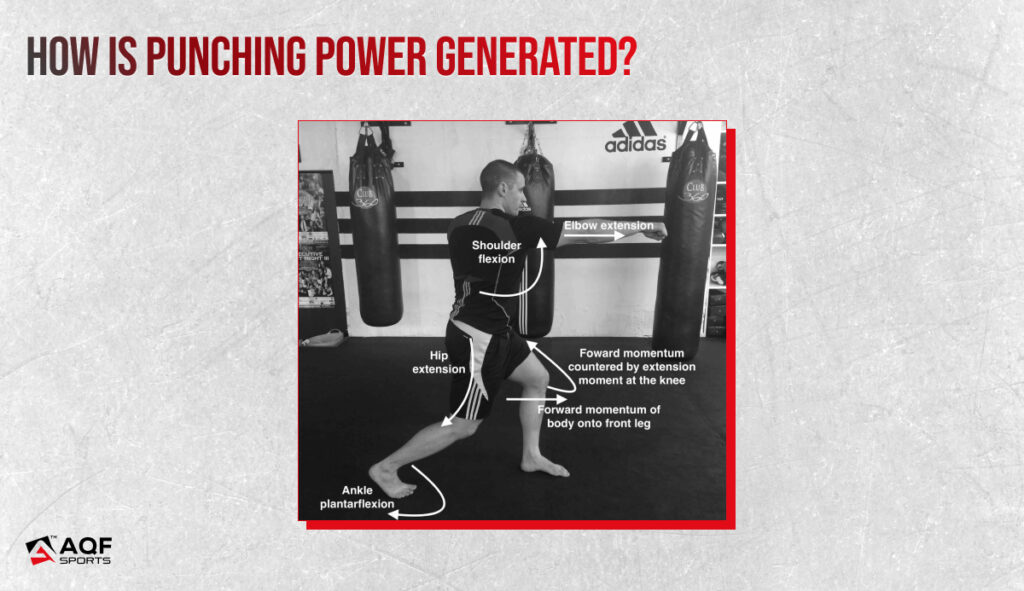
Punching power is generated through a combination of biomechanics, muscular strength, and efficient neuromuscular coordination. Efficient neuromuscular coordination is critical for maximizing punching power. This involves the synchronization of muscle activation and timing to execute a well-coordinated punch. The brain sends signals to activate the relevant muscle groups in the correct sequence.
Fast-twitch muscle fibers are particularly important for explosive movements. These fibers are predominant in muscles involved in punching, such as the deltoids, triceps, and core muscles. Training for punching power often includes exercises that target and activate these fast-twitch fibers.
The key factors involved in generating punching power include:
Lower Body Engagement:
The power generated in a punch starts from the legs and is transferred through the kinetic chain. The quadriceps, hamstrings, and glutes play a crucial role in providing a strong foundation and generating force.
Hip Rotation:
The muscles of the core, particularly the obliques, play a significant role in hip rotation. The transverse abdominis and internal/external obliques are engaged to generate torque and transfer power from the lower body to the upper body.
Torque Generation:
The rotational force generated by the hip rotation is transferred through the torso. The muscles of the core, including the rectus abdominis, obliques, and lower back muscles, contribute to the production of torque.
Shoulder and Arm Engagement:
The deltoids, pectoralis major, triceps, and biceps are engaged during the extension and retraction of the shoulder and arm. These muscles work in coordination to deliver the punch with speed and power.
The Bottomline
Throwing explosive punches requires a lot of power training. With our top punching power training drills and exercises, you can master the punching technique, stance and form to become a champion in the ring!
Discover More Topics






